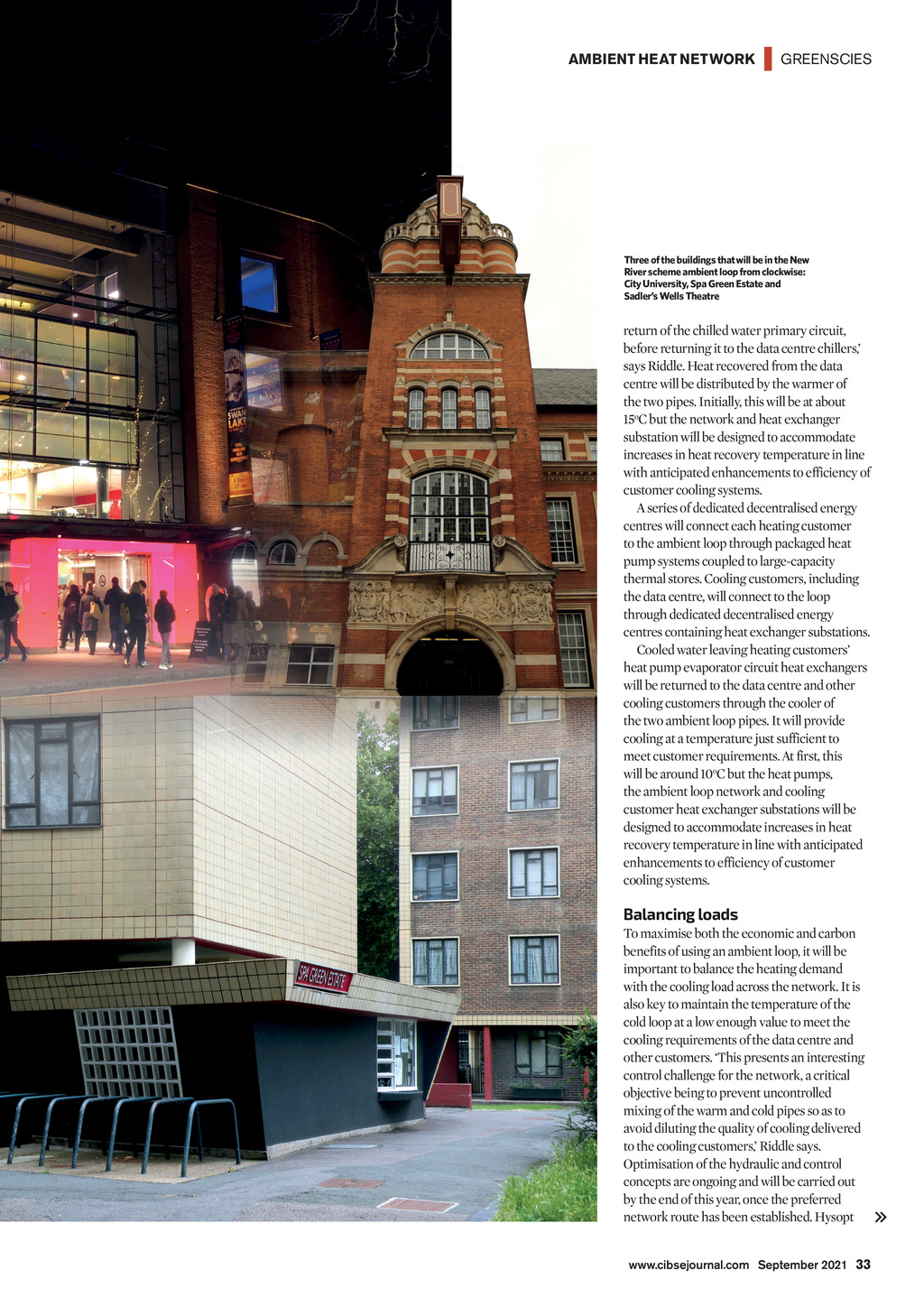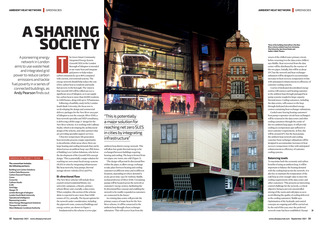




AMBIENT HEAT NETWORK | GREENSCIES A SHARING SOCIETY A pioneering energy network in London aims to use waste heat and integrated grid power to reduce carbon emissions and tackle fuel poverty in a series of connected buildings, as Andy Pearson finds out GREENSCIES PROJECT TEAM The consortium includes the following partners: Building Low Carbon Solutions Carbon Data Resources Carbon Descent Projects Cenex Consortio Cullinan Studio E.ON Grid Edge Hanger 19 London Borough of Islington London South Bank University Operational Intelligence Repowering London Silver Energy Management Solutions Transport for London West Midlands Combined Authority T he Green Smart Community Integrated Energy System (GreenSCIES) in the London Borough of Islington is intended to use waste heat and integrate grid power to help reduce carbon emissions by up to 80% compared with current, conventional systems. The energy network should help reduce the cost of low carbon heat to residents and tackle fuel poverty in the borough. The vision is that GreenSCIES will be rolled out over a significant area of Islington, so it can supply low carbon heat to more than 10,000 residents in 3,500 homes, along with up to 70 businesses. Following a feasibility study led by London South Bank University, the focus now is on developing the design and commercial delivery packages for the New River area part of Islington to test the concept. Silver EMS, a heat network specialist and MEP consultancy, is delivering a RIBA stage 2+ design for the New River scheme. It is working with Cullinan Studio, which is developing the architectural design of the scheme, and other partners that are providing specialist support services. Ultra-low temperature 5th generation heat networks present a major opportunity to decarbonise whole areas where there are large heating and cooling demands that can be shared across an ambient loop, says Phil Jones, of Building Low Carbon Solutions, who led on the development of the GreenSCIES concept design. This is potentially a major solution for reaching net-zero smart local energy systems (SLES) in cities by integrating infrastructure like heat networks, heat pumps, thermal storage electric vehicles (EVs) and PVs. Bi-directional flow The New River scheme will include three council-owned residential blocks, two university campuses, a theatre, primary school, library and, crucially, a data centre. When complete, this section of the scheme alone is expected to save more than 5,000 tonnes of CO2e annually. The layout options for the network under consideration, including the pipework route, connected buildings and energy centres, are shown in Figure 1. Fundamental to the scheme is a two-pipe This is potentially a major solution for reaching net zero SLES in cities by integrating infrastructure ambient loop district energy network. This will allow low-grade thermal energy to be exchanged between buildings requiring heating and cooling. The loop is formed from two pipes: one warm, one cold (Figure 3). The design will permit bi-directional flow within the pipes, to allow energy exchange to take place between heating and cooling customers at different times and in different locations, depending on where demand is at any given time, says Dr Anthony Riddle, technical director of Silver EMS. Circulating pumps will be located across the network at customers energy centres, facilitating the bi-directional flow concept and enabling the network to be readily expanded as customers are connected in the future. An existing data centre will provide the primary source of waste heat for the New River scheme. It will be connected to the ambient loop through a heat exchanger substation. This will recover heat from the 32 September 2021 www.cibsejournal.com CIBSE Sep 21 pp32-34, 36 GreenSCIES.indd 32 27/08/2021 15:59